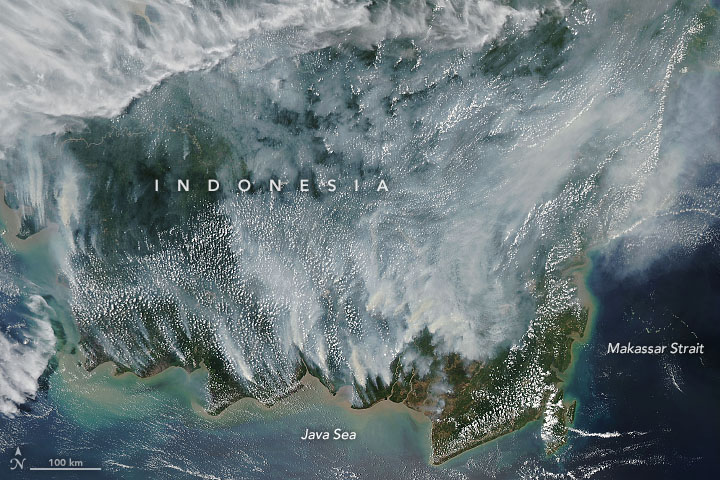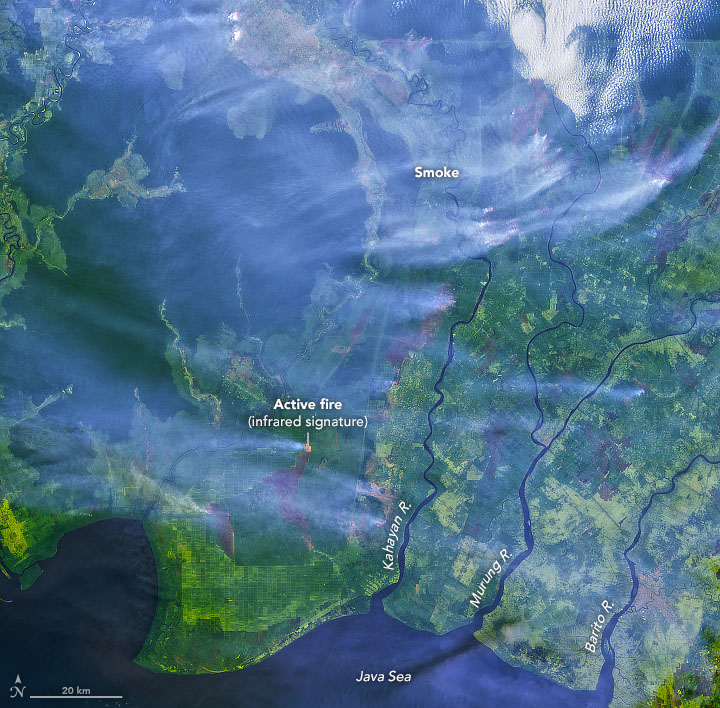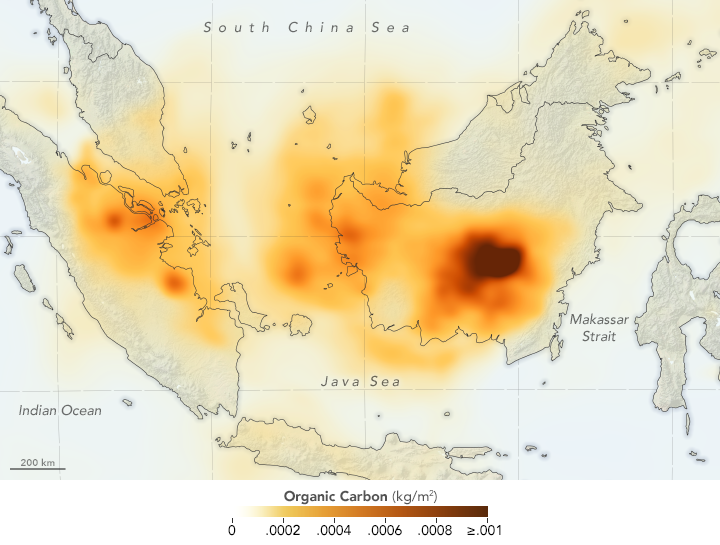Haze has hit the region hard once more, with thick clouds of noxious smoke caused by forest fires in Sumatra and Borneo drifting across the sea to peninsular Malaysia and Singapore, causing air pollution so severe that thousands of schools across the region have had to shut down due to health concerns. If you haven’t experienced the haze for yourself, you’ve probably at least seen photos of its ominous effects on cities throughout the region.
The haze / smoke in #Singapore this morning is thick in the air #Indonesia #fires pic.twitter.com/CCc4UeFOuL
— James Reynolds (@EarthUncutTV) September 17, 2019
https://twitter.com/ehhitsadam/status/1173077970098905088
But what you may not have yet seen is what the haze looks like from above. And, in it’s own way, it’s just as scary if not more so.

The image above of Borneo blanketed in smoke was captured by NASA’s Aqua satellite’s Moderate Resolution Imaging Spectroradiometer (MODIS) on September 15. As can be seen in the image, most of the fires are coming from Kalimantan, the Indonesian part of the island (which is also shared by Malaysia and Brunei). According to NASA, “Satellites have detected evidence of fires burning in this region throughout much of August, but the number and intensity of the fires increased in the first week of September.”
Read also: Indonesia’s toxic haze affecting Borneo’s orangutans – rescuers
The image below, also taken on September 15, comes from the Landsat 9 satellite’s Operational Land Imager (OLI) and shows fires burning in several oil palm concessions in southern Borneo. Environmental activists and Indonesian government investigators have blamed much of the fires on land clearance burnings done to make way for new palm oil plantations. Palm oil companies have been accused of initiating these fires, often through proxies to avoid direct involvement and culpability.

The map below shows the amount of organic carbon emissions in the air above Borneo on September 17, 2019. It was created using a model combining information from satellites, aircraft, and ground-based observing systems. It indicates that the vast majority of the carbon is being emitted from burning peatland areas. Peat fires can release enormous amounts of stored up carbon and are extremely difficult to put out.

The Indonesian government is deploying thousands of security forces and water-bombing aircraft to tackle the blazes in Borneo and Sumatra.
Read also: Indonesia ‘doing everything’ to put out forest fires: President Joko Widodo
The fires belch smog across Southeast Asia annually, but this year’s are the worst since 2015 and have added to concerns about wildfire outbreaks worldwide exacerbating global warming.
With additional reporting by AFP



